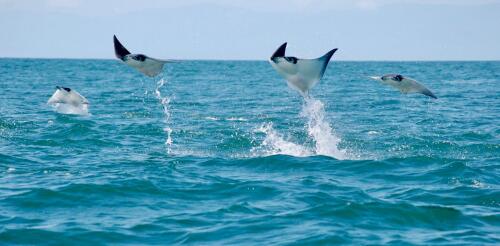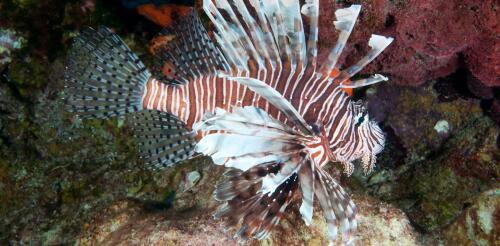Marine biology
Many sharks and rays are known to breach, leaping fully or partly out of the water. In a recent study, colleagues and I reviewed research on breaching and ranked the most commonly hypothesized functions for it. We found that removal of external parasites was the most frequently proposed explanation, followed by predators chasing their prey; predators concentrating or stunning their prey; males chasing females during courtship; and animals fleeing predators, such as a ray escaping from a hammerhead shark in shallow water. We found that the highest percentage of breaches, measured by the number of studies that described it, occurred in manta rays and devil rays, followed by basking sharks and then by eagle rays and cownose rays. However, many other species of sharks, as well as sawfishes and stingrays, also perform this behavior. A breaching white shark surprises researchers off Cape Cod, Massachusetts. Why it matters It takes a lot of ene...
The Southern Ocean encircling Antarctica is the world’s largest feeding ground for baleen whales – species like humpbacks that filter tiny organisms from seawater for food. In the 20th century, whalers killed roughly 2 million large whales in the Southern Ocean. Some populations, like the Antarctic blue whale, were reduced by more than 99% and have been struggling to recover, even though most nations ended commercial whaling in the mid-1980s. Today a new threat is emerging: industrial fishing for Antarctic krill – tiny swimming crustaceans, roughly 2 inches (60 millimeters) long. In a newly published study, colleagues and I found that competition with this burgeoning fishery may impede whales’ recovery. I first learned about this issue in early 2022, when a colleague working aboard a cruise ship told me that he had seen approximately 1,000 fin whales feeding on krill near the South Orkney Islands, just north of Antarctica. This was probably the largest a...
Curious Kids is a series for children of all ages. If you have a question you’d like an expert to answer, send it to curiouskidsus@theconversation.com. Is there life in the sea that hasn’t been discovered? – Haven W., age 12, McKinney, Texas Imagine going to a place on Earth where no one has ever been. There are many locations like that in the ocean, which covers more than 70% of our planet. In the ocean, creatures live at many different depths, just as animals and birds live at different heights in a forest. Every ocean life form has to find a way to gather nourishment, reproduce and contribute to an ecological community. The ocean is thousands of feet deep in many areas and offers millions of opportunities for life to thrive. Biologists don’t know how many species live in the ocean, but they estimate that fewer than 10% have been described. Black and white sm...
Brazil’s coastal waters teem with a rich array of species that paint a living tapestry beneath the waves. This underwater world is particularly special because many of its species are endemic – they are found nowhere else on Earth. The southwestern Atlantic is home to 111 endemic reef fish species, each of which plays a crucial role in the intricate web of marine life. An uninvited guest has arrived in these tropical waters: the Pacific red lionfish (Pterois volitans). Renowned for its stunning appearance and voracious appetite, the lionfish was first detected off of Florida in 1985 and has spread throughout the Caribbean, killing reef fish in large numbers. Now it has breached a formidable obstacle: the Amazon-Orinoco river plume, which flows into the Atlantic from northeastern Brazil. This massive discharge of fresh water has long functioned as a barrier separating Caribbean fish species from those farther south along Brazil’s coastline. Scientists and env...
It’s coming. Winds are weakening along the equatorial Pacific Ocean. Heat is building beneath the ocean surface. By July, most forecast models agree that the climate system’s biggest player – El Niño – will return for the first time in nearly four years. El Niño is one side of the climatic coin called the El Niño-Southern Oscillation, or ENSO. It’s the heads to La Niña’s tails. During El Niño, a swath of ocean stretching 6,000 miles (about 10,000 kilometers) westward off the coast of Ecuador warms for months on end, typically by 2 to 4 degrees Fahrenheit (about 1 to 2 degrees Celsius). A few degrees may not seem like much, but in that part of the world, it’s more than enough to completely reorganize wind, rainfall and temperature patterns all over the planet. Marine heat waves can trigger coral bleaching. Alexis Rosenfeld/Getty Images...



